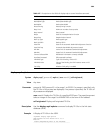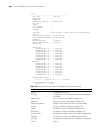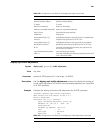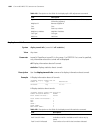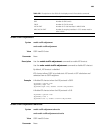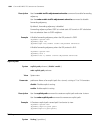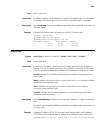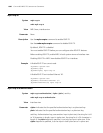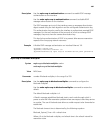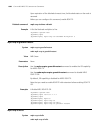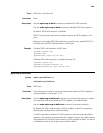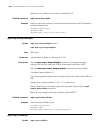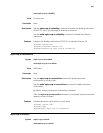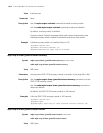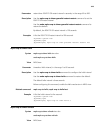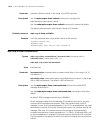
1607
Description Use the mpls rsvp-te authentication command to enable RSVP message
authentication on the interface.
Use the
undo mpls rsvp-te authentication command to disable RSVP
message authentication on the interface.
The RSVP messages sent out of the interface convey a message authentication
digest created using the hash algorithm and the configured authentication key.
This authentication key also used by the interface to authenticate received RSVP
messages. For the two interfaces at the two ends of a link to exchange RSVP
messages, they must share the same authentication key.
This hop-by-hop authentication of RSVP is to prevent fake resource reservation
requests from occupying network resources.
Example # Enable RSVP message authentication on interface Ethernet 1/0.
<Sysname> system-view
[Sysname] interface ethernet 1/0
[Sysname-Ethernet1/0] mpls rsvp-te authentication plain partner123
mpls rsvp-te blockade-multiplier
Syntax mpls rsvp-te blockade-multiplier number
undo mpls rsvp-te blockade-multiplier
View MPLS view
Parameter number: Blockade multiplier, in the range 3 to 255.
Description Use the
mpls rsvp-te blockade-multiplier command to configure the
blockade multiplier.
Use the
undo mpls rsvp-te blockade-multiplier command to restore the
default.
The default blockade multiplier is 4.
A ResvErr message establishes blockade state in each node through which it
passes to solve the killer reservation problem where one request could deny service
to another. The use of blockade state allows a smaller request to be forwarded or
established.
The blockade timeout time is determined by the following equation:
Blockade_Expired_Time = Kb × refresh-time
Where, Kb is the blockade multiplier, and refresh-time is the refresh interval for
reservation state.



